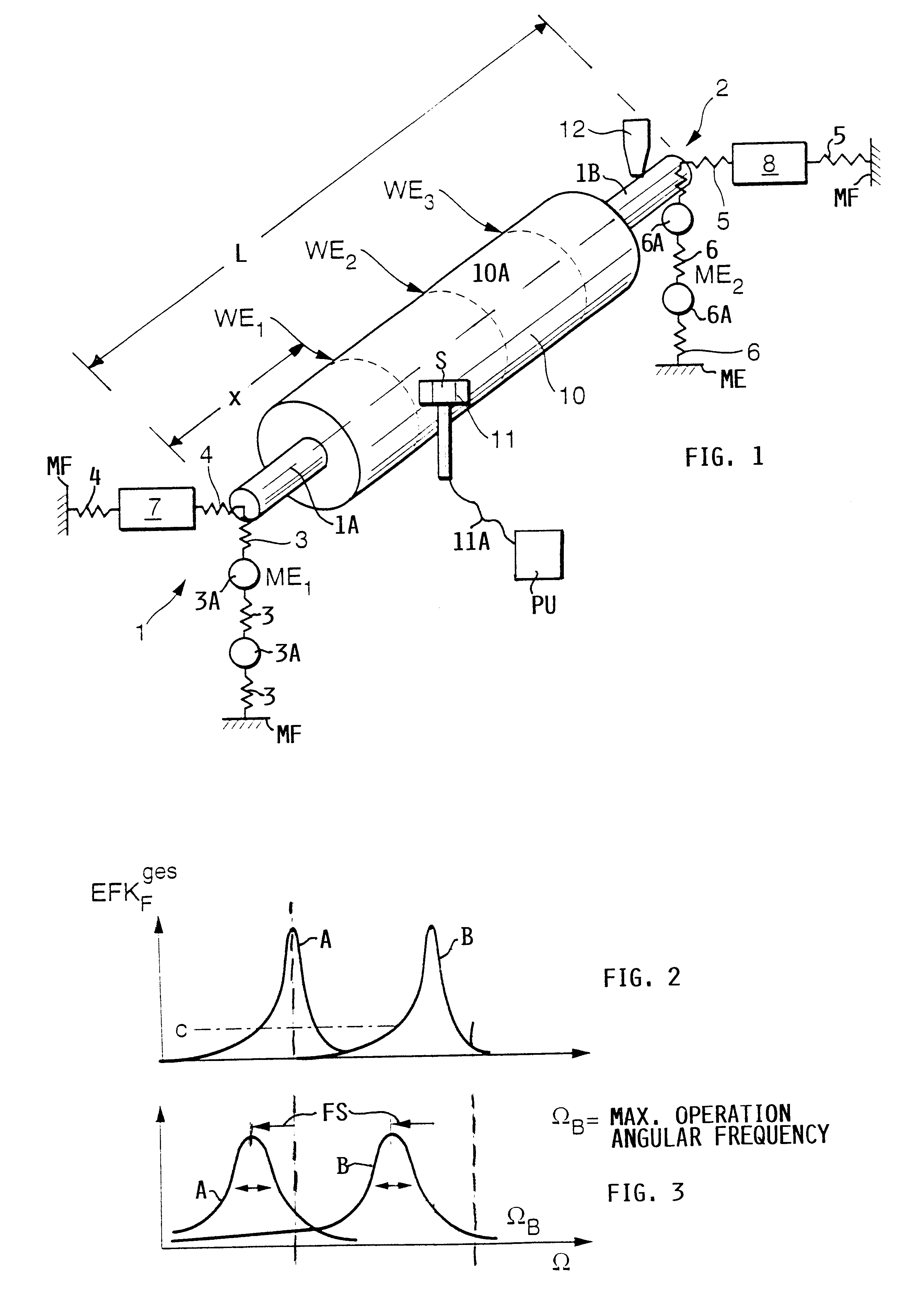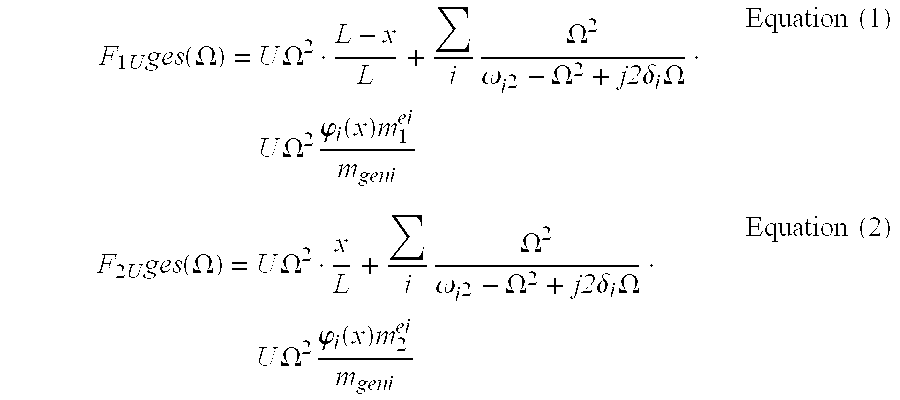Ascertaining information for compensating an unbalance of elastic rotors
a technology of elastic rotors and information, applied in the direction of static/dynamic balance measurement, vibration measurement in solids, instruments, etc., can solve the problems of infinitely large bending or permanent deformation of the rotor, unbalance effect, internal bending moments remain in the rotor, etc., to avoid the computer processing of these system data
- Summary
- Abstract
- Description
- Claims
- Application Information
AI Technical Summary
Benefits of technology
Problems solved by technology
Method used
Image
Examples
Embodiment Construction
FIG. 1 shows schematically a system for measuring the unbalances of a rotor 10. Details of the rotor support and its drive are not part of the invention. However, such details are shown in "International Standard ISO#1925, Third Edition "Mechanical Vibration-Balancing-Vocabulary", pages 14, 15, 19, 20, 24, 25 and 26 incorporated herein by reference. A first mounting 1 holds or supports one end 1A of a rotor shaft. A second mounting 2 holds the other end 1B of the shaft of the rotor 10. These supports 1 and 2 are, for example, constructed as conventional rocking bridge bearings as used in force or displacement measuring balancing machines. These supports or bearings 1 and 2 are supported against a machine frame MF. The first support 1 is formed by springs 3 and masses 3A providing a vertical support in a first measuring plane ME.sub.1. Springs 4 provide a horizontal support in the plane ME.sub.1. The springs 3 and 4 and the masses 3A form a first spring mass system, whereas the symbo...
PUM
 Login to View More
Login to View More Abstract
Description
Claims
Application Information
 Login to View More
Login to View More - R&D
- Intellectual Property
- Life Sciences
- Materials
- Tech Scout
- Unparalleled Data Quality
- Higher Quality Content
- 60% Fewer Hallucinations
Browse by: Latest US Patents, China's latest patents, Technical Efficacy Thesaurus, Application Domain, Technology Topic, Popular Technical Reports.
© 2025 PatSnap. All rights reserved.Legal|Privacy policy|Modern Slavery Act Transparency Statement|Sitemap|About US| Contact US: help@patsnap.com



